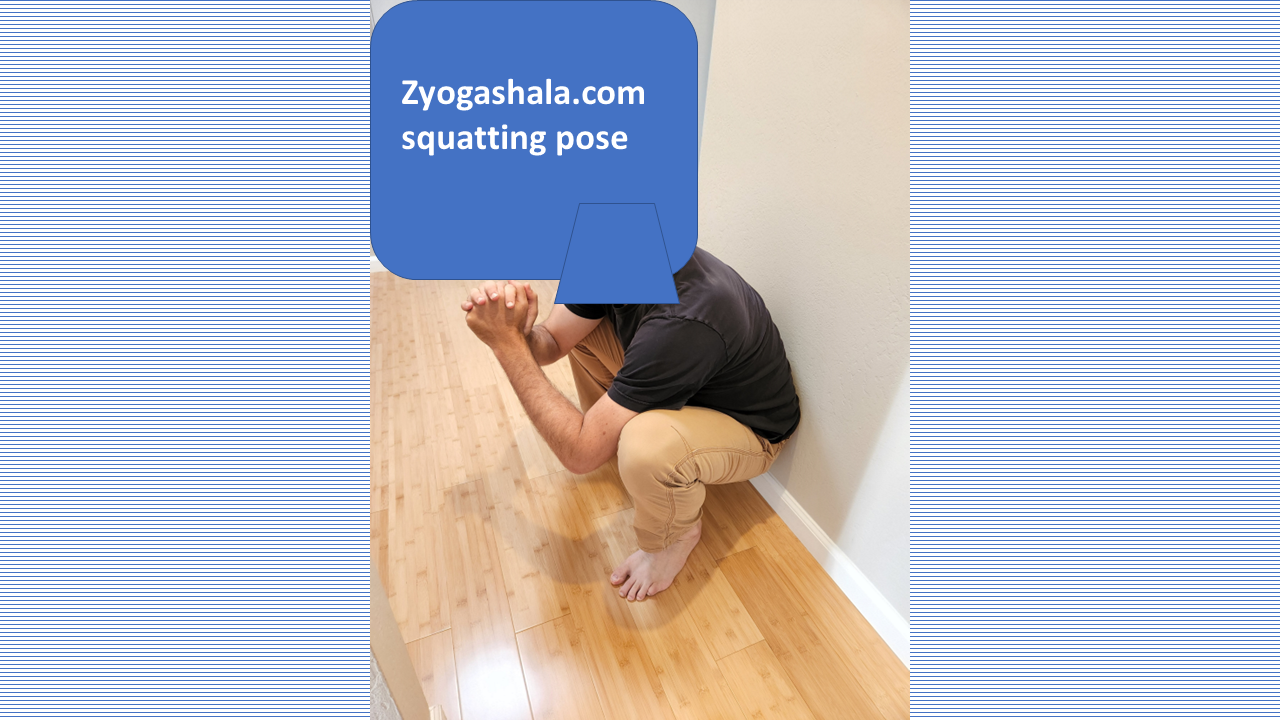“Many professionals sit 40 or more hours per week at their desks. These same workers could have a daily drive in their car to and from work of 30 minutes to 2 hours a day. And then, when they get home, they sit on the couch and watch TV. All of these together create an unhealthy burden on the body from too much sitting. Doing yoga in the office on a daily basis and even multiple times per day can be of great comfort and relief to the body and mind. In this article, we will introduce the topic of office yoga, several poses you can do to get started with your office yoga practice, and a great book resource to take office level to the maximum level.”
What is Office Yoga?
Office yoga brings the philosophy and practice of holistic mind, body, and breath-synchronized movement to the context of an office workplace. Being in an office, you will not be wearing your exercise clothes but your office clothes which are more restrictive, and you won’t be in a yoga studio or gym where you have tons of room to move. There will be obstacles such as furniture and equipment, and even the temperature may not be ideal for a full or extreme yoga practice. However, yoga can be modified according to your environment, and even as simple as taking a 2-minute break to sit with your hands on your lap and breathe while concentrating on your breathing can be an effective break for your mind and body. Of course, it can be more.
What are the Benefits of Office Yoga
Office yoga can prevent stress, add circulation to the body, prevent, delay or remedy repetitive stress injury, avoid overeating, manage anxiety and depression and make you happier.
How to Get Started With Office Yoga?
Start simple. Start with 1 pose that you learn from this article, the book reference at the end of this article, or that you know or learned elsewhere and is a well-suited match for your office environment. The pose you select should accommodate the location, temperate, and circumstances of your office environment and provide relief to the mind and body. Each and every pose you add to your routine or collection of poses should provide a positive feeling in the mind and body. Write the name of the pose down in your journal, on a notecard, in your email inbox, or in your online notebook. Do this pose 3 times per day exactly each and every day in the office for 2 to 3 weeks. The practice should take 30 seconds to 3 minutes at most. Then after 2 to 3 weeks, add a second pose and write it in your journal. Do both poses 3 times per day EVERY DAY in the office. Being consistent is the key to success.
What is Some Good Office Yoga Poses?
Deep Breathing in Office Chair: Just sit in your chair with legs in front of you and your feet on the ground with your knees bent at a 90-degree angle. Now close your eyes fully or partially and put your hands in your lap. Close your mouth and take a deep breath slowly for a few seconds through your nose and breathe out through your nose. The rhythm and speed of your breath should be natural and easy without any discomfort. Repeat for about 30 seconds to 2 minutes. Do not talk, look at your phone, or do anything during this pose.
Hands up Cross: Sitting and typing is a leaning forward activity that strains the shoulders and wrists. To reverse this, hold your arms up like the police said, stop and put your hands in the air. Your upper arms should be parallel to the ground, and your forearms should be 100% vertical. Both your arms and your chest should be in a flat plane, and you should feel a stretch in your pectorals, your shoulders, and your pinky fingers as you open up the front side of your body. Close your eyes and breathe comfortably out of your nose and hold the pose for 30 seconds to 2 minutes.

Squatting: Sitting all day will tighten your hips and hamstrings. If your office clothes will allow it, a couple of minutes of this pose while breathing mindfully will do wonders. Imagine you need to use a restroom that is only a hole in the floor, and you need to lower yourself while squatting. If you are not flexible, resting your back against the wall while doing this can help you get into the position.

Sitting against the wall: Put your back against the wall and lower yourself so that your legs are bent at a 90-degree angle. Hold the position and breathe through your nose. This will produce tension in the thighs and legs as you use your leg strength to hold the position and hold your stomach while in the pose.

Hopping Boxer: Imagine a boxer getting ready for a fight. He hops and dances while thinking of the battle in front of him. Do this in your office clothes if it’s not too hot outside, so you don’t get too sweaty. Remember you need to be wearing comfortable shoes to do this exercise. Meditate and breathe while doing the pose. Lack of motion in the body can make you cold and sick. This boxer-like hopping activity while breathing and relaxing will bring heat and energy to the body to avoid sickness from sitting. Demo example.
Shoulders behind head: clasp your hands behind your head and bring your upper arms somewhat parallel with each other. Press the back of your head to the palms of your hands, and gently move your elbows up to the ceiling. This movement stretches your upper back and relies on the hunch in your back. Ensure you feel zero pain doing this and feel a pleasurable stretch in the head, neck, and shoulder region to do this pose.

Downward Dog: Downward dog is a traditional yoga pose included in almost all yoga regimens. It strengthens and stretches while relaxing the body. If you can do this pose at work every day, your body will thank you. You can easily search for instructions on Downward dog or watch this Demo example.
Warrior Pose: The warrior pose is also a traditional yoga pose included in many yoga regimens. It strengthens the legs and stretches the lower body, including all the way down to the feet. If you can get this pose integrated into your day at the office, it will energize, strengthen and stretch your body and help you get through your office work. Search for instructions on the web or watch this demo example.
How Can I Get More Information About Office Yoga?
My yoga teacher has found a book about office yoga and recommended this book to get more authoritative details and formal education on office yoga. What I presented in this article is really just a getting started guide, but with the help of Diana Fairechild’s book called Office Yoga, At-your-desk exercises, you study and prepare for a much more thorough set of principles to do office yoga.
What Else Can I Do to Improve on My Office Yoga Experience?
The following tips will keep you healthy while working long hours in the office.
- Control your anger, and stay calm even if you feel slighted or mistreated by your boss, co-workers, or employees
- Make sure to sleep enough hours per night to be rested when arriving at the office
- Try walking part way or all the way to work and back. Live too far from the office; you can take public transport and walk from the station to the office. If you can’t organize walking as your daily commute, try walking to lunch every day if you can find a nice location for lunch about 20 minutes from the office. Walking each day will keep your body healthy
- Moderation in your caffeine intake. Having too much caffeine can increase your stress and make you more tired, as well as overeating. Reduce caffeine to stay calmer and avoid energy swings. Caffeine only in the morning and not mid-day could be a strategy as well.
- Try intermittent fasting. Sitting at the desk after a meal is really hard. Your body posture will deteriorate, and your productivity will be low. Skipping breakfast to be alert in empty in the AM part of the day is a common strategy that has been used effectively Fasting all day until you arrive home and eating at home is a great strategy if you can manage it. Intermittent fasting is a practice on its own, which you can research.
- Take a yoga class outside of the office. Find a convenient location and a teacher you like and stick to the teacher’s class at the same time every week. Ideally, taking 3 to 4 classes per week on a regular discipline will carry over into more healthy experiences at the office
Conclusion
It is not easy to go to an office job and work 40 plus hours a week at a chair and desk. Integrating office yoga into your day can go a long way to making your time in the office happier and more productive and leaving yourself in better condition for other activities when you leave the office.







